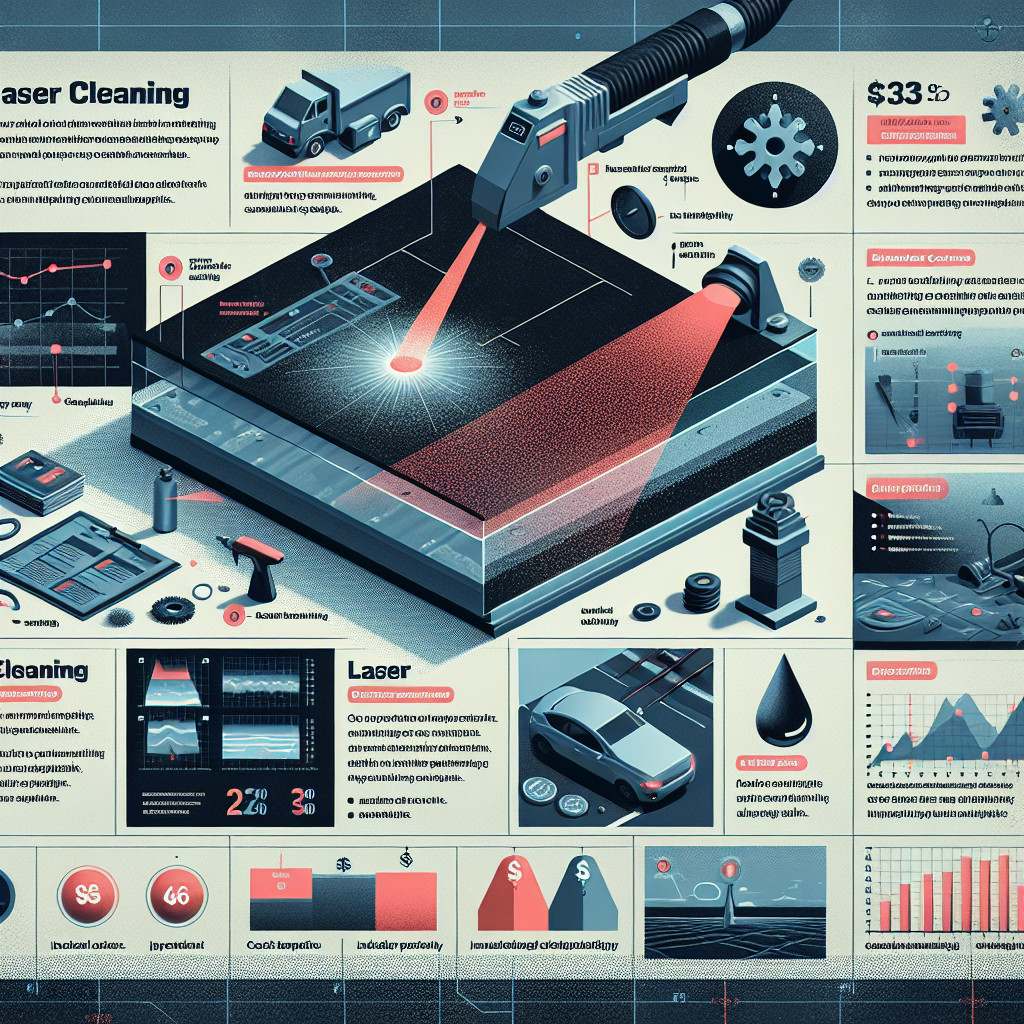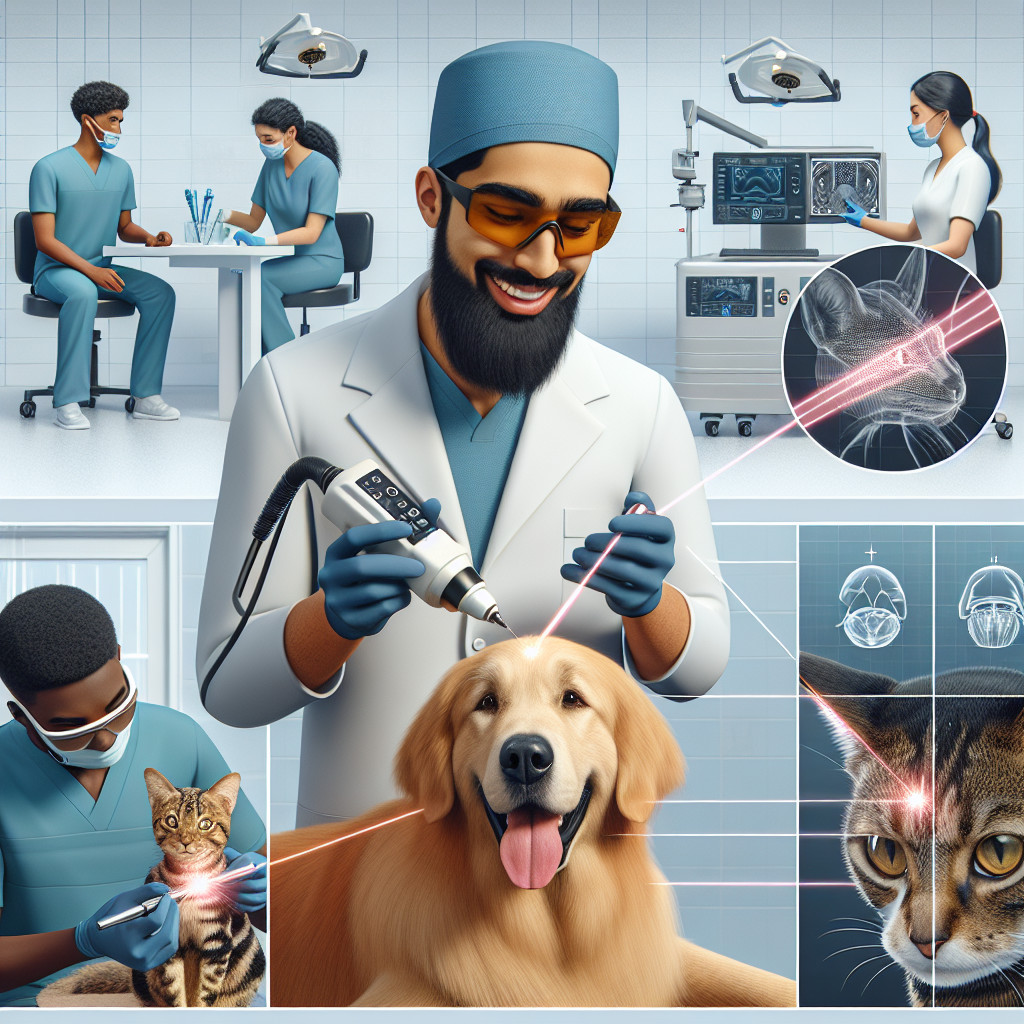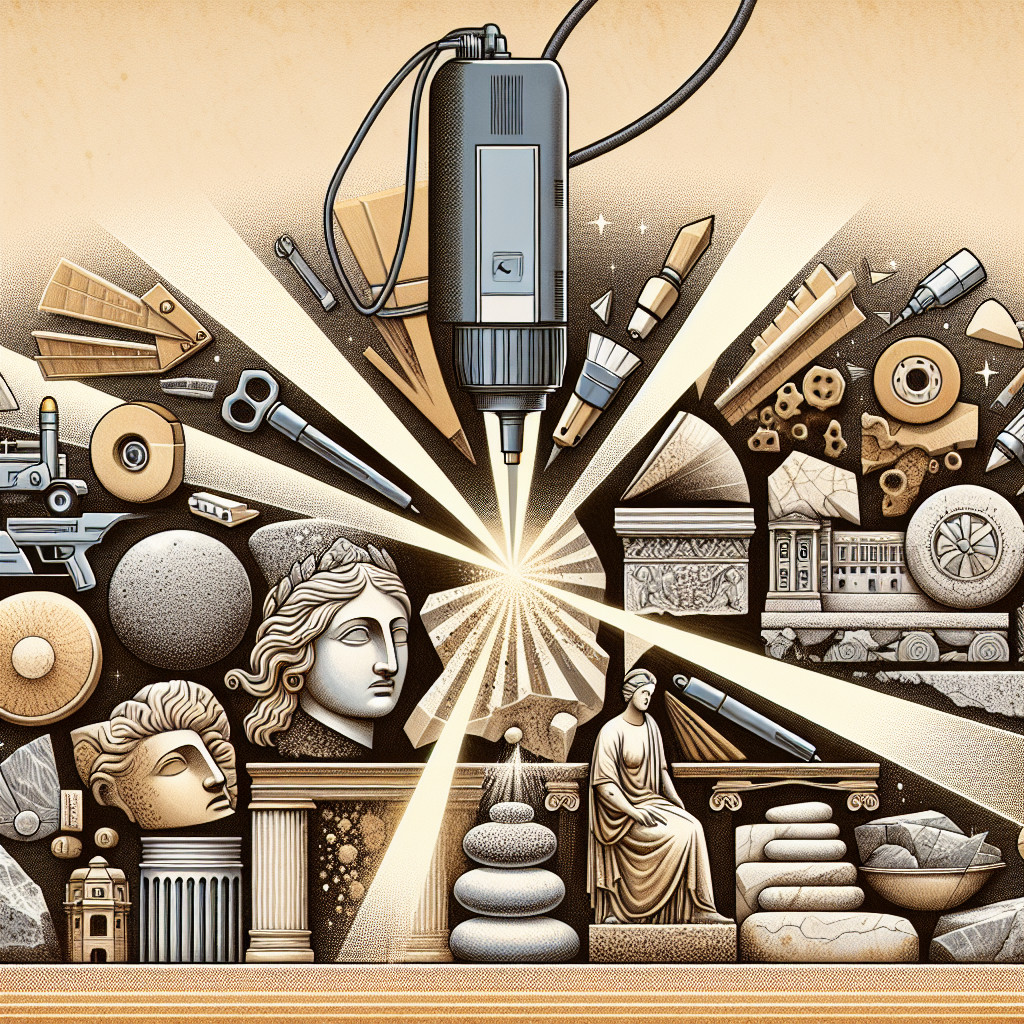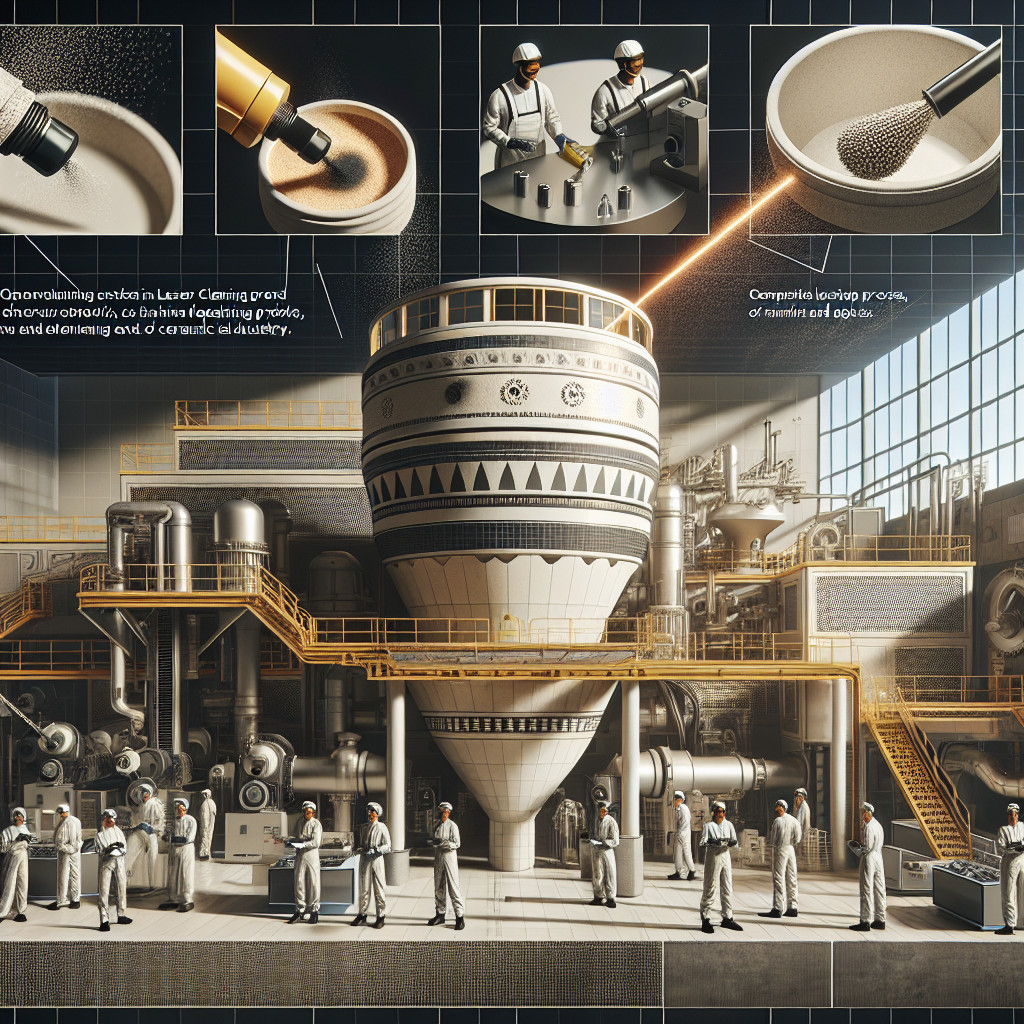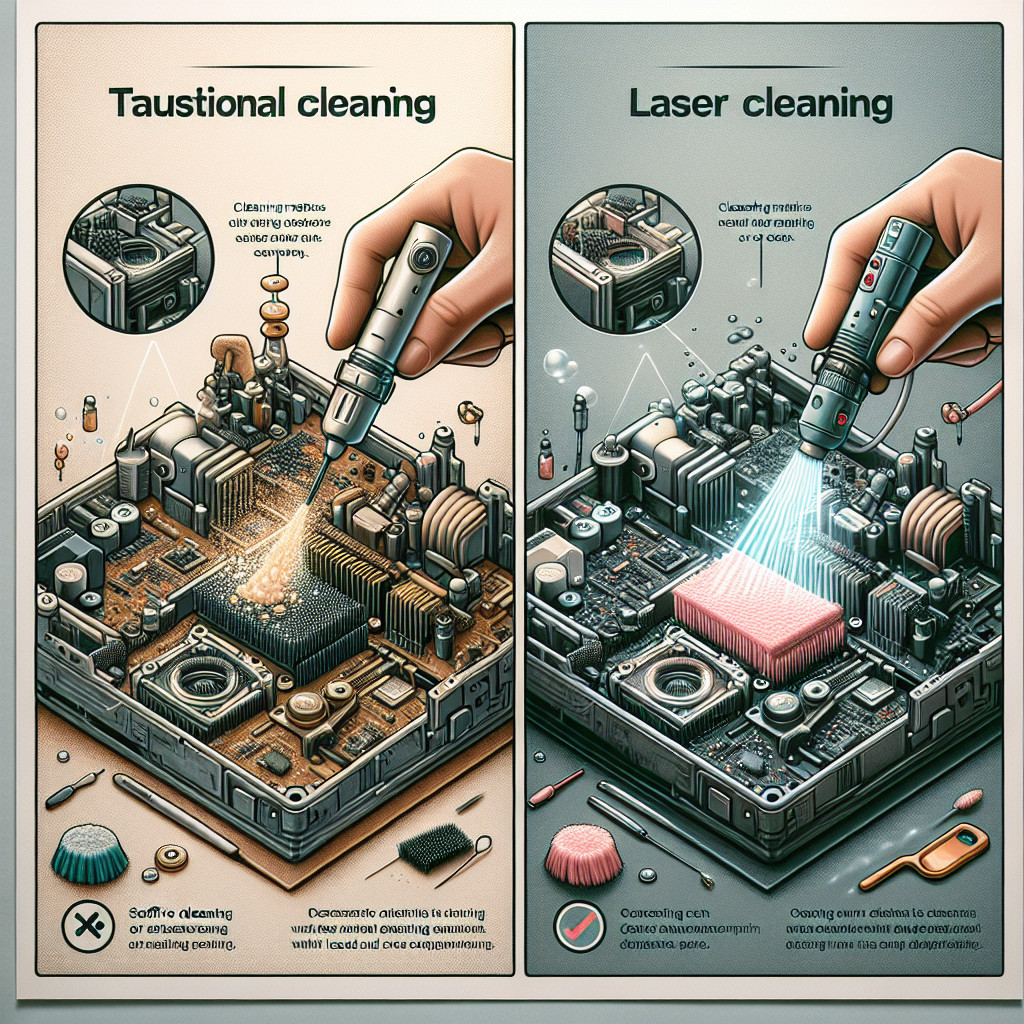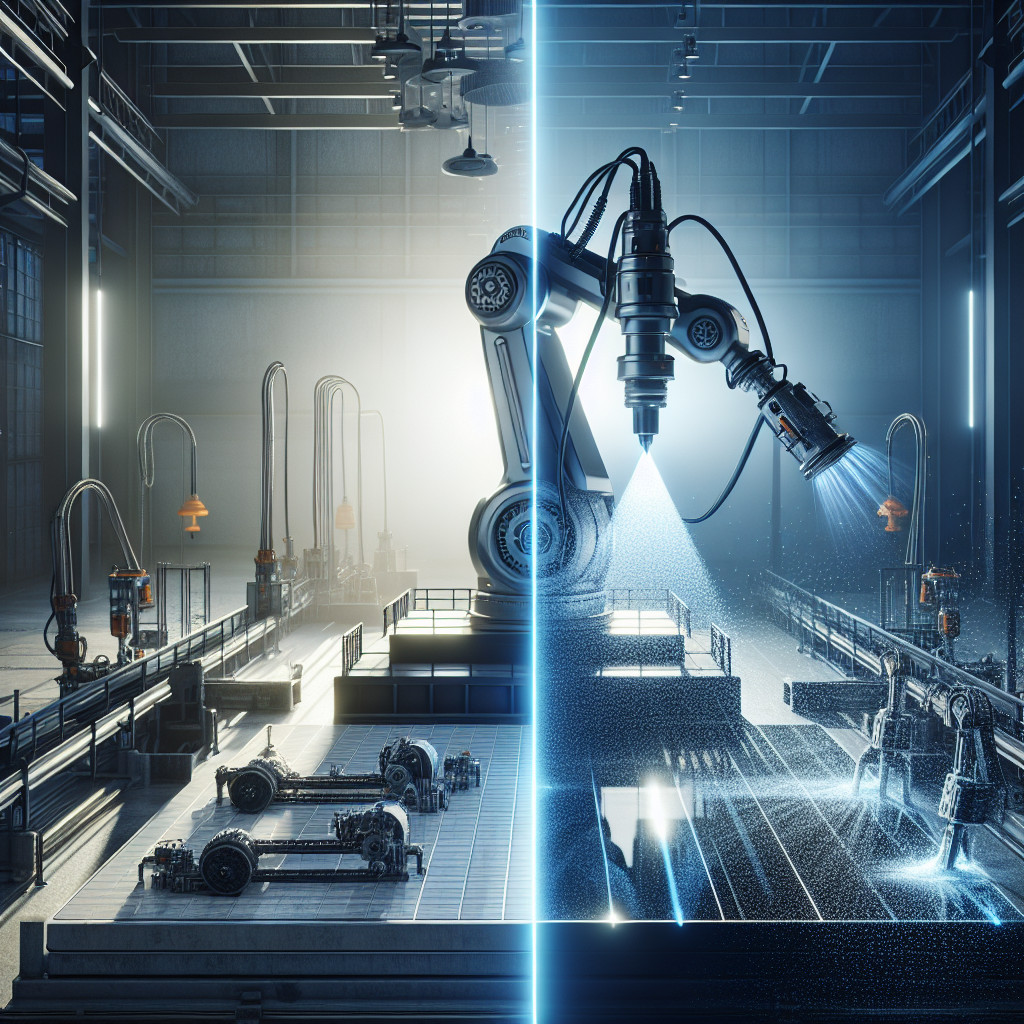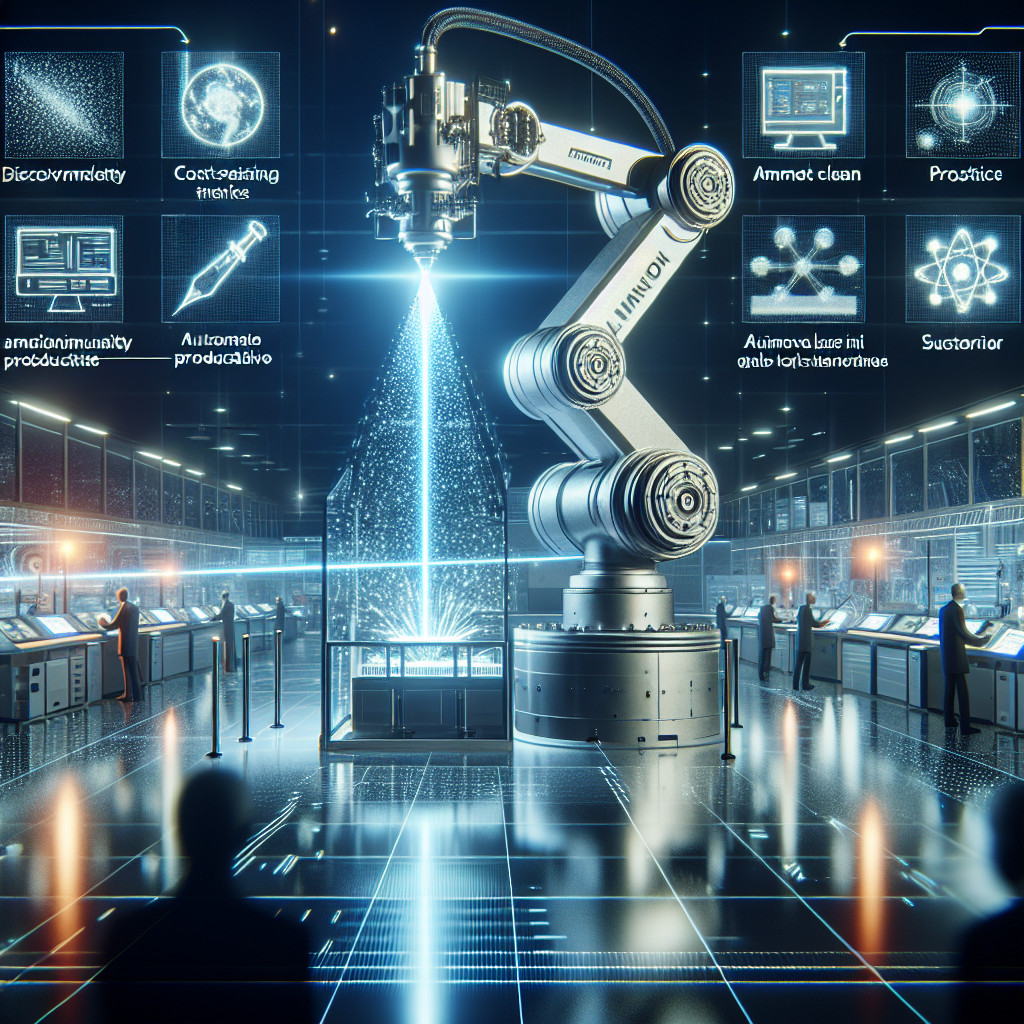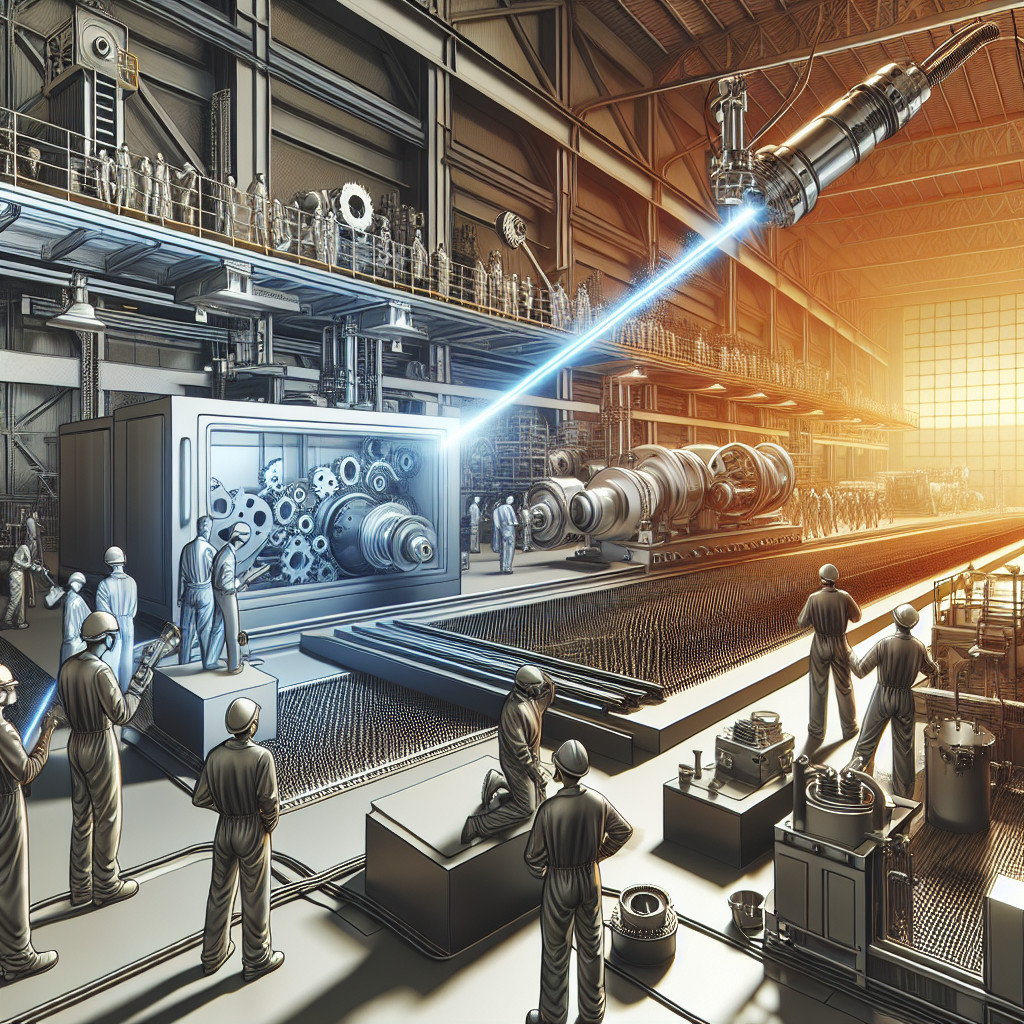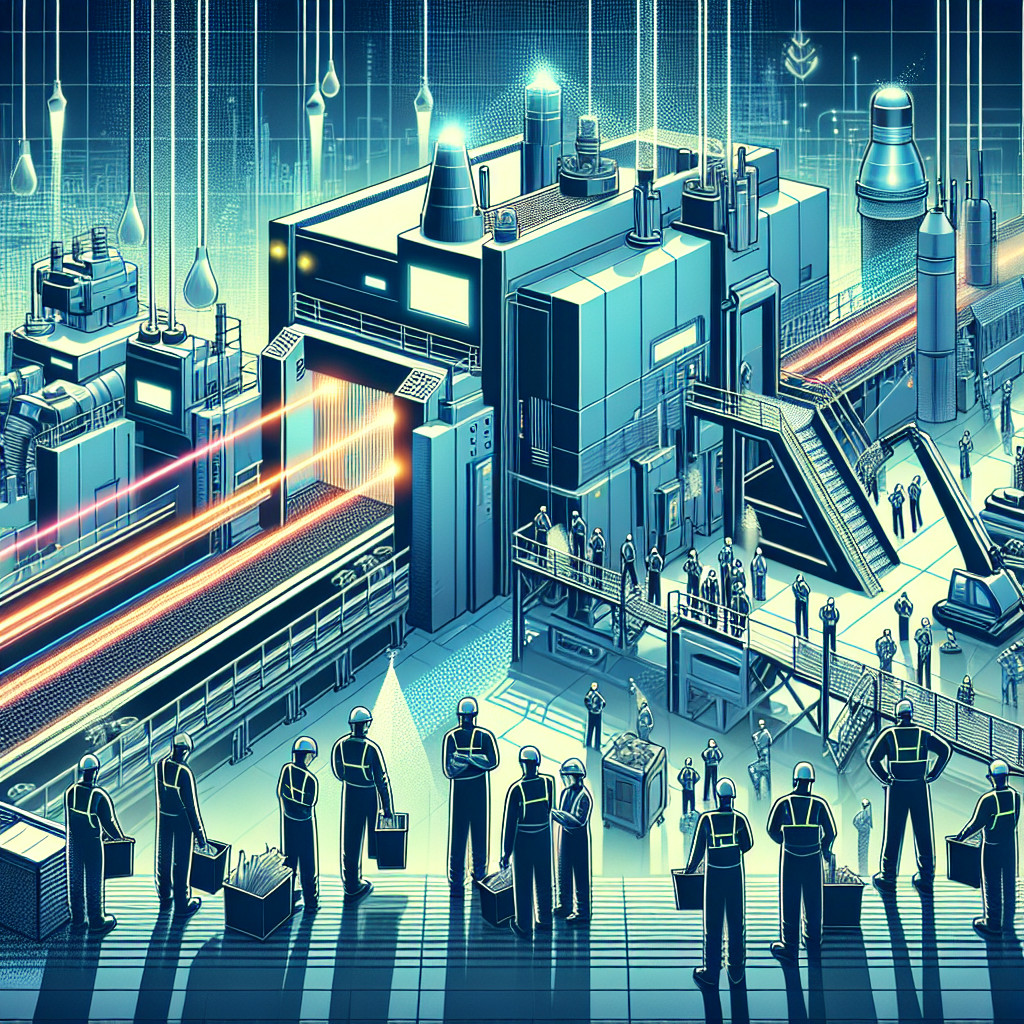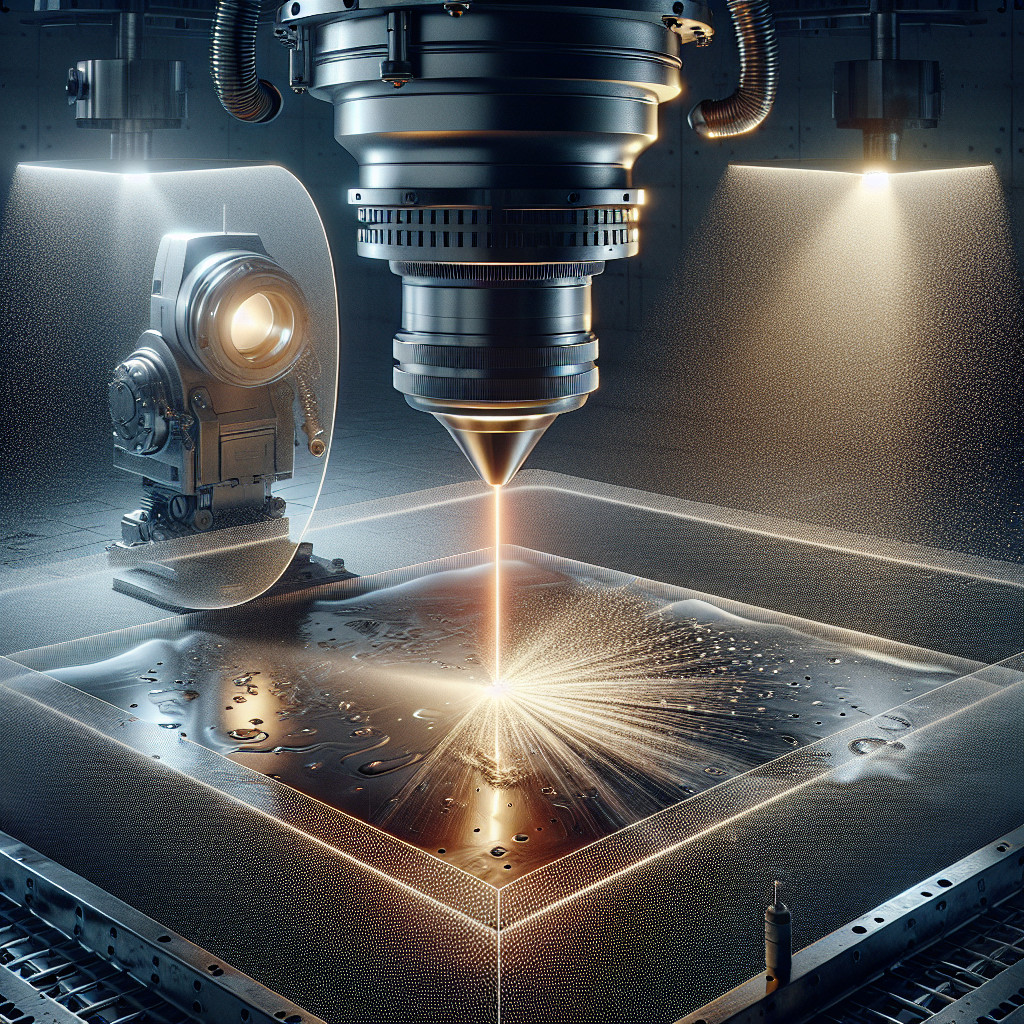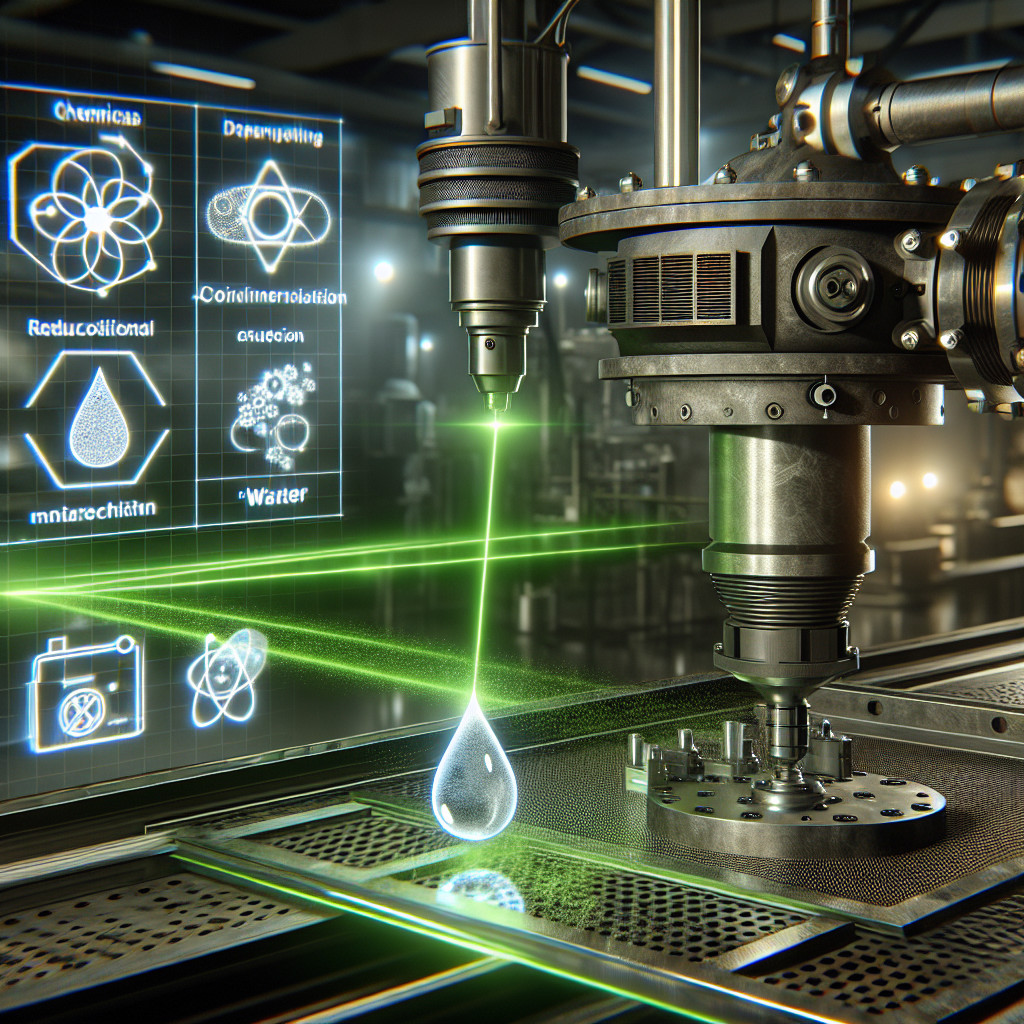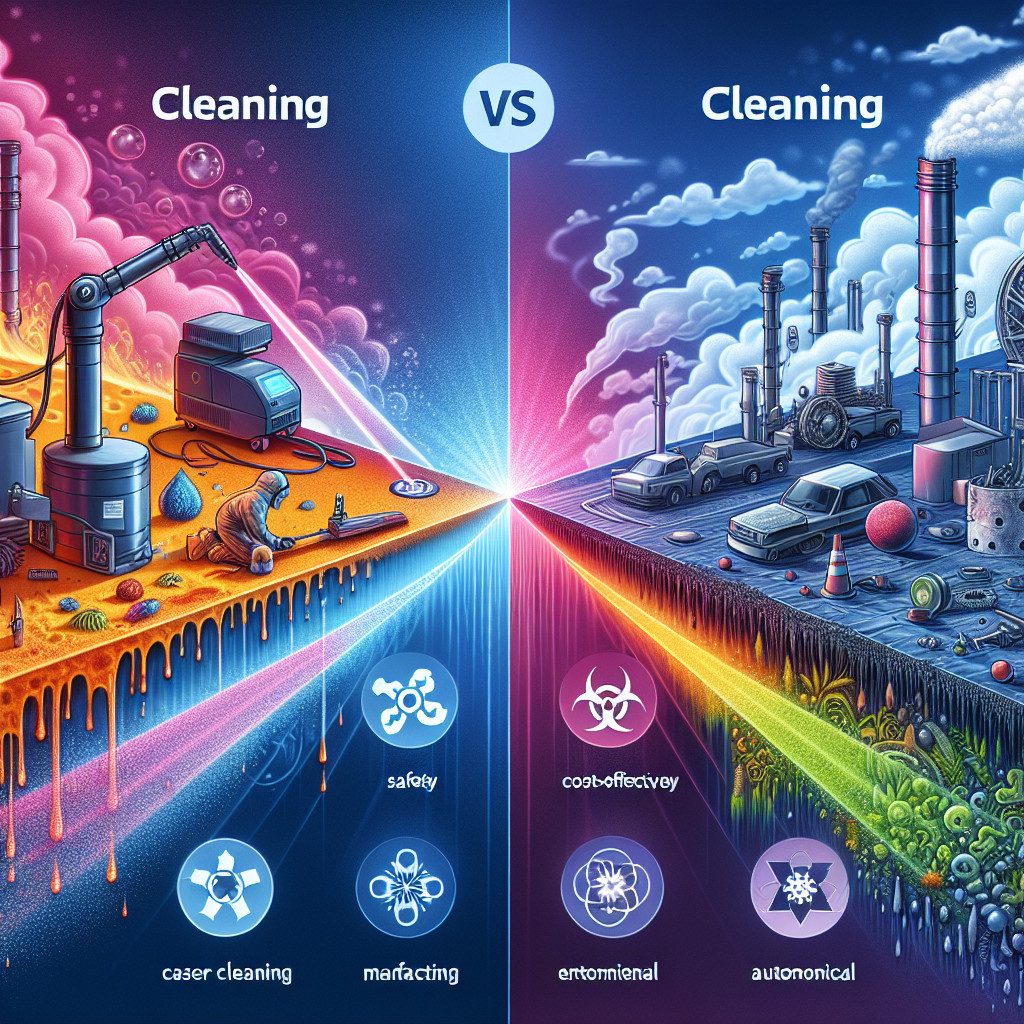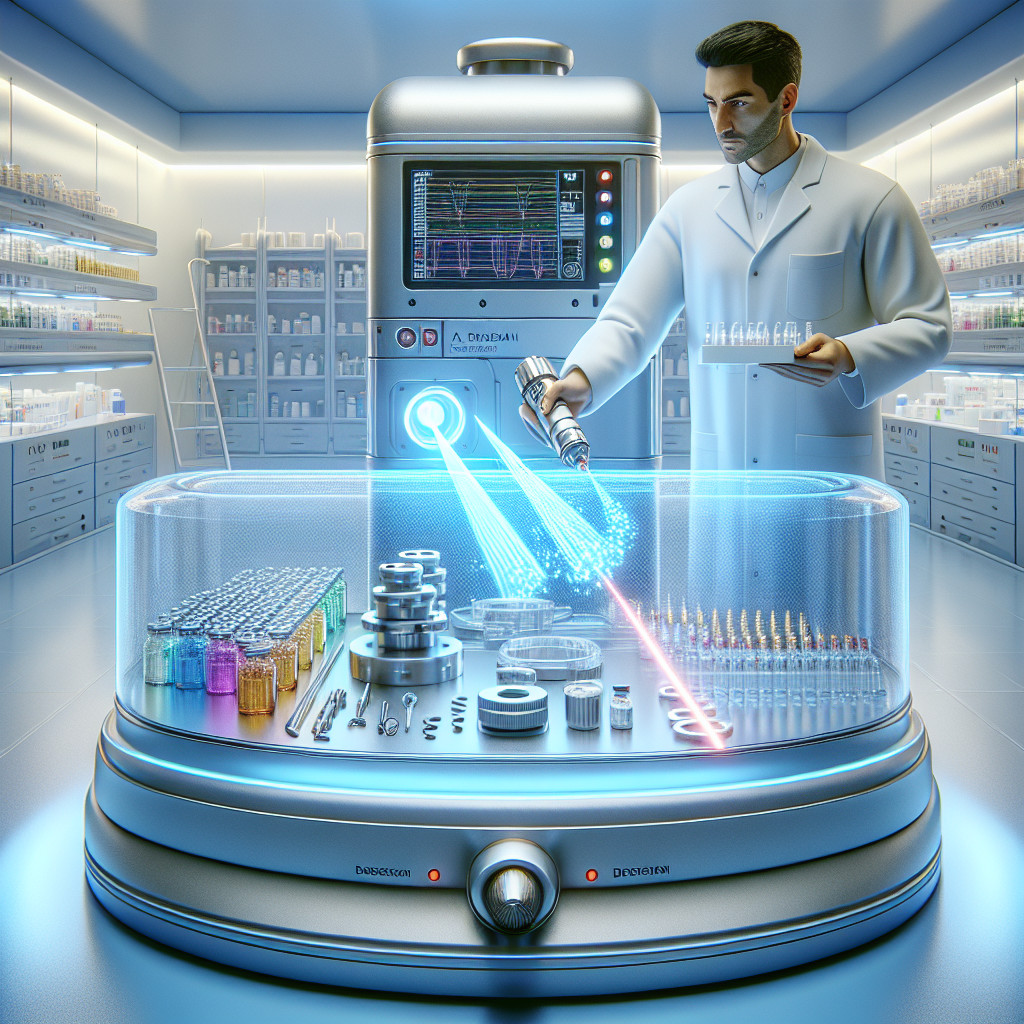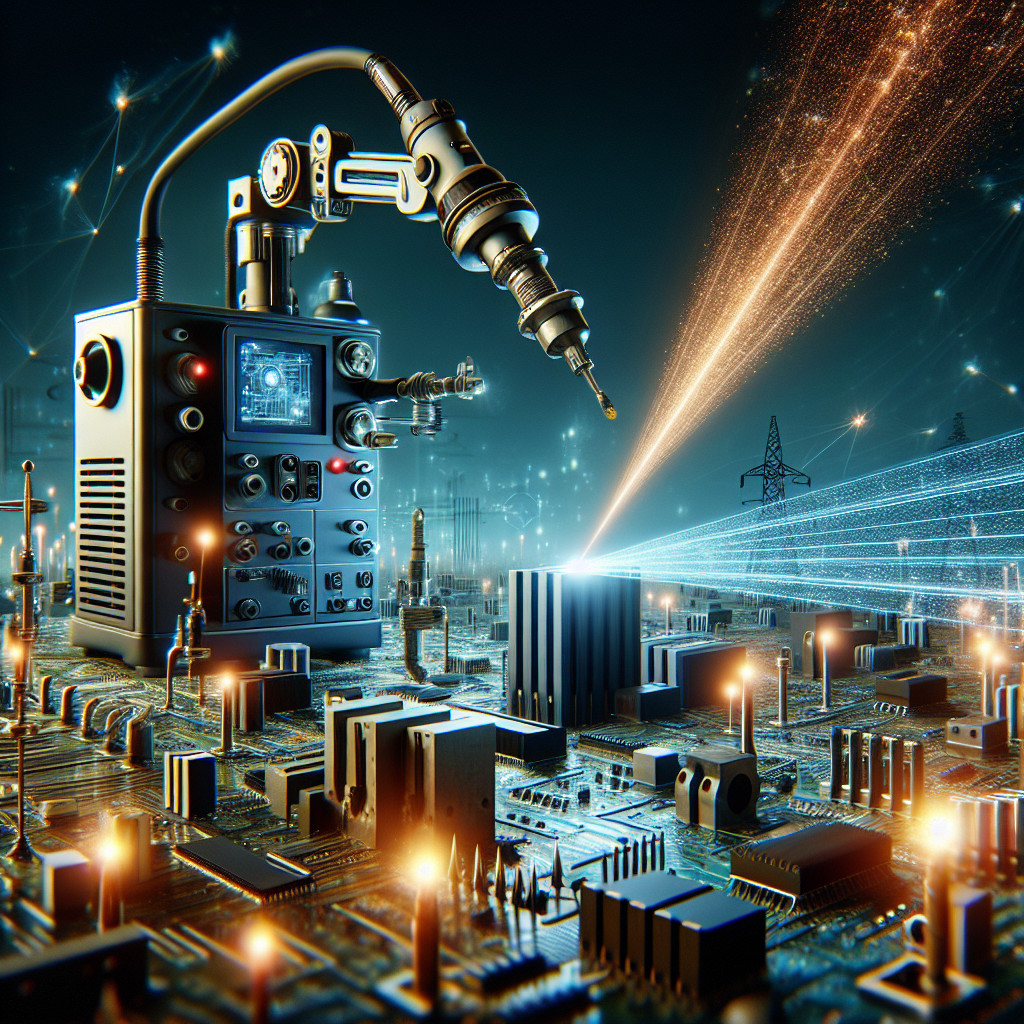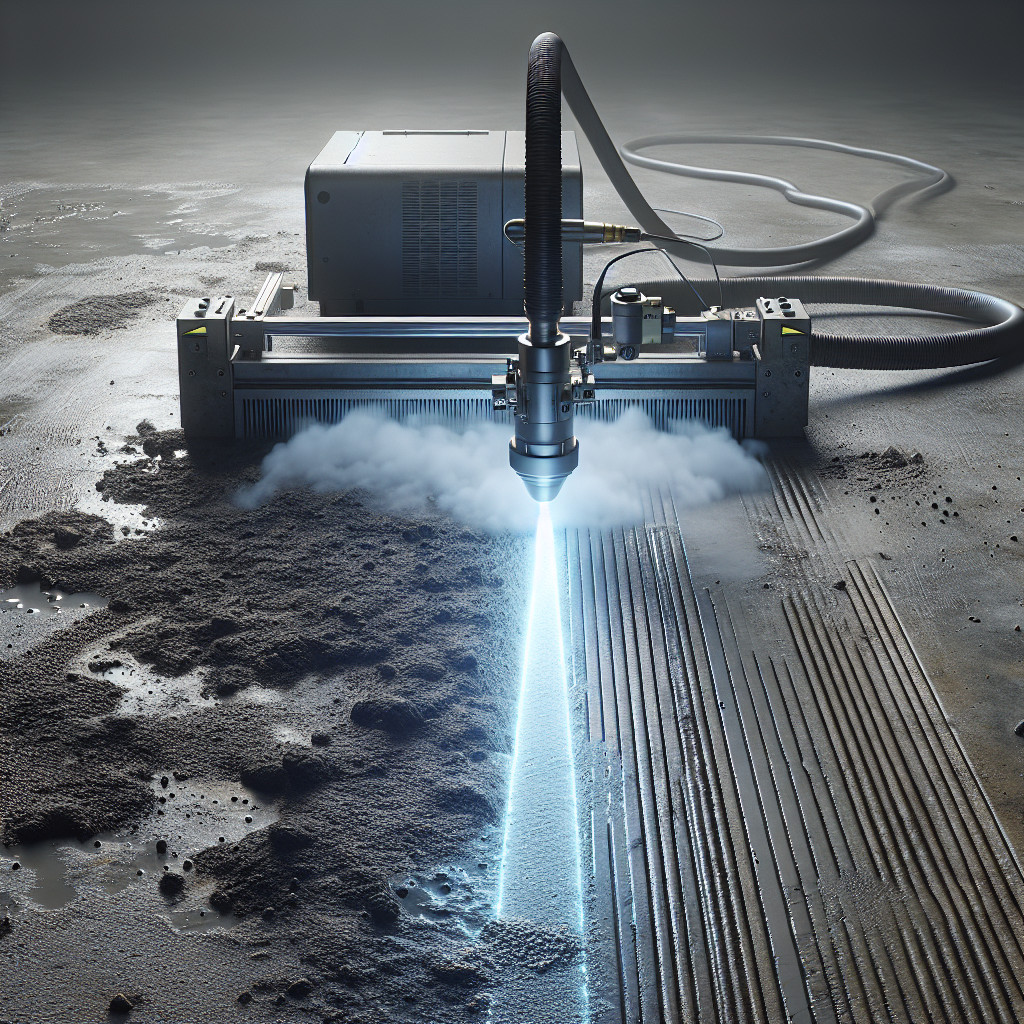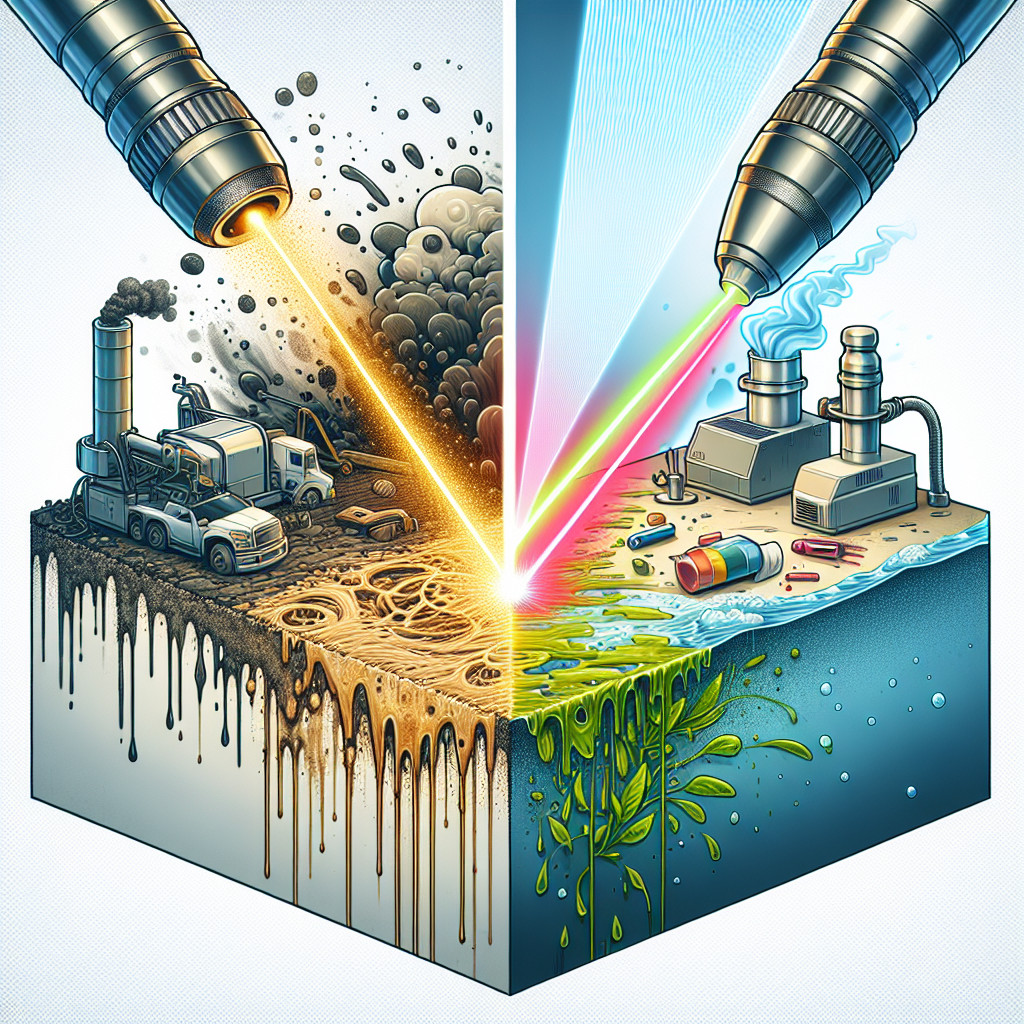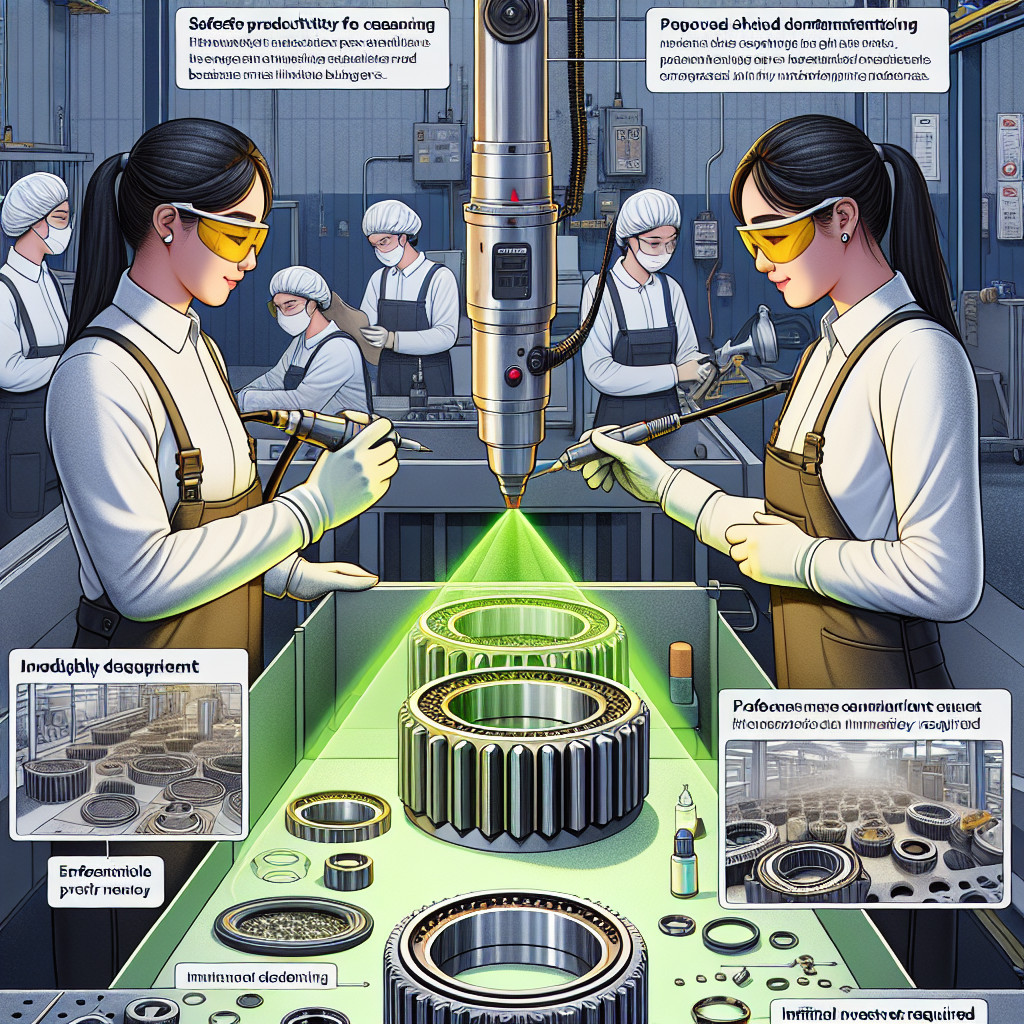- The history and development of laser cleaning in the automotive industry
- The benefits of laser cleaning in the automotive industry
- The different types of lasers used for cleaning in the automotive industry
- The challenges and limitations of laser cleaning in the automotive industry
- The role of laser cleaning in reducing the risk of corrosion in automotive body panels
- The benefits of laser cleaning in the automotive industry
- The application of laser cleaning in restoring and refurbishing automotive parts
- The application of laser cleaning in removing paint defects and imperfections in automotive finishes
The history and development of laser cleaning in the automotive industry
The automotive industry has always been at the forefront of technological advancements. Over the years, various methods have been developed to improve the efficiency and quality of automotive manufacturing processes. One such method that has gained significant attention in recent years is laser cleaning. Laser cleaning is a non-contact, non-abrasive method of removing contaminants from surfaces using laser beams. This article will delve into , highlighting its benefits and applications.
Early developments:
The concept of using lasers for cleaning purposes can be traced back to the 1960s when lasers were first introduced. However, it was not until the 1990s that laser cleaning started gaining traction in the automotive industry. Initially, lasers were primarily used for welding and cutting applications. However, researchers soon realized the potential of lasers in cleaning processes due to their precision and efficiency.
Advancements in laser technology:
As laser technology advanced, so did the capabilities of laser cleaning. The introduction of high-power lasers and the development of pulse lasers allowed for more effective and efficient cleaning. High-power lasers generate intense beams that can remove even the toughest contaminants, such as rust, paint, and grease, from automotive surfaces. Pulse lasers, on the other hand, emit short bursts of energy, which minimize the heat transfer to the surface, reducing the risk of damage.
Benefits of laser cleaning in the automotive industry:
Laser cleaning offers numerous benefits over traditional cleaning methods. Firstly, it is a non-contact method, which means there is no physical contact between the cleaning tool and the surface. This eliminates the risk of scratches or damage to the automotive parts. Secondly, laser cleaning is a non-abrasive method, making it suitable for delicate surfaces. It can remove contaminants without altering the surface structure or texture. Additionally, laser cleaning is a highly precise method, allowing for selective cleaning of specific areas without affecting the surrounding surfaces.
Applications of laser cleaning in the automotive industry:
Laser cleaning has found various applications in the automotive industry. One of the primary uses is in the preparation of surfaces for painting. Laser cleaning can effectively remove old paint, rust, and other contaminants, providing a clean and smooth surface for the application of new paint. This ensures better adhesion and a longer-lasting paint finish. Laser cleaning is also used for the removal of adhesives, sealants, and coatings from automotive parts. It can clean intricate parts, such as engine components, without causing any damage.
Future prospects:
The future of laser cleaning in the automotive industry looks promising. As technology continues to advance, lasers will become more powerful and efficient, further improving the cleaning process. Additionally, the integration of robotics and automation in laser cleaning systems will enhance productivity and reduce human intervention. Laser cleaning will continue to revolutionize the automotive industry by providing a faster, more efficient, and environmentally friendly cleaning solution.
Keywords: laser cleaning, automotive industry, history, development, advancements, benefits, applications, future prospects.
Long-tail phrases:
– Laser cleaning in automotive manufacturing processes
– Advancements in laser technology for automotive cleaning
– Benefits of non-contact laser cleaning in the automotive industry
– Applications of laser cleaning in surface preparation for painting
– Laser cleaning for the removal of adhesives and coatings in automotive parts
– The future of laser cleaning in the automotive industry.
The benefits of laser cleaning in the automotive industry
One of the key advantages of laser cleaning in the automotive industry is its ability to remove contaminants without the need for harsh chemicals or abrasive materials. Traditional cleaning methods often involve the use of chemicals that can be harmful to the environment and pose health risks to workers. Laser cleaning eliminates the need for these hazardous substances, making it a safer and more sustainable option.
Furthermore, laser cleaning is a highly efficient process that saves both time and money. Unlike traditional methods that require manual labor and extensive preparation, laser cleaning can be automated and integrated into existing production lines. This significantly reduces the cleaning time and increases productivity, allowing manufacturers to meet tight deadlines and deliver high-quality products.
In addition to its efficiency, laser cleaning also improves the overall quality of automotive components. By removing contaminants and rust, laser cleaning ensures that surfaces are free from imperfections, resulting in better adhesion and bonding during subsequent processes such as painting or coating. This leads to enhanced durability and longevity of the finished product, reducing the need for repairs or replacements.
Another significant benefit of laser cleaning is its versatility. It can be used on a wide range of materials commonly found in the automotive industry, including metal, plastic, glass, and composites. Whether it’s removing rust from a car chassis or cleaning delicate electronic components, laser cleaning can adapt to various surfaces and deliver consistent results.
Moreover, laser cleaning is a non-destructive process that preserves the integrity of the underlying material. Unlike abrasive methods that can cause surface damage or alter the properties of the material, laser cleaning gently removes contaminants without compromising the structural integrity. This is particularly crucial in the automotive industry, where precision and reliability are paramount.
In summary, laser cleaning has revolutionized the automotive industry by offering numerous benefits. Its non-contact and non-abrasive nature make it a safer and more sustainable alternative to traditional cleaning methods. The efficiency and versatility of laser cleaning save time and money while improving the overall quality of automotive components. Its non-destructive nature ensures the integrity of the underlying material, making it an ideal choice for manufacturers and service providers in the automotive sector.
Keywords: laser cleaning, automotive industry, non-contact, non-abrasive, contaminants, rust, paint, surface, precise, controlled, environment, productivity, quality, durability, versatility, materials, non-destructive, integrity.
Long-tail phrases:
– Laser cleaning benefits in the automotive industry
– How laser cleaning improves productivity in automotive manufacturing
– The environmental advantages of laser cleaning in the automotive sector
– Enhancing quality and durability with laser cleaning in automotive components
– The versatility of laser cleaning in automotive applications.
The different types of lasers used for cleaning in the automotive industry
1. CO2 Lasers: Carbon dioxide lasers are widely used in the automotive industry for cleaning applications. These lasers emit a high-powered beam of infrared light, which is absorbed by the surface being cleaned. The absorbed energy causes the contaminants on the surface to vaporize, leaving behind a clean and residue-free surface. CO2 lasers are particularly effective at removing grease, oil, and other organic materials.
2. Nd:YAG Lasers: Neodymium-doped yttrium aluminum garnet lasers, commonly known as Nd:YAG lasers, are another popular choice for automotive cleaning. These lasers emit a high-intensity beam of light that is absorbed by the contaminants on the surface. The absorbed energy causes the contaminants to heat up and evaporate, leaving behind a clean surface. Nd:YAG lasers are often used for removing rust, paint, and other stubborn contaminants.
3. Fiber Lasers: Fiber lasers are a relatively new addition to the automotive cleaning industry. These lasers use optical fibers to deliver a high-powered beam of light to the surface being cleaned. Fiber lasers are highly versatile and can be used for a wide range of cleaning applications, including removing dirt, dust, and other particles from various automotive components.
4. Excimer Lasers: Excimer lasers are commonly used for precision cleaning in the automotive industry. These lasers emit a high-energy beam of ultraviolet light, which is absorbed by the contaminants on the surface. The absorbed energy causes the contaminants to break down and evaporate, leaving behind a clean and residue-free surface. Excimer lasers are often used for cleaning delicate automotive components, such as sensors and electronic circuit boards.
In addition to these commonly used lasers, there are also other types of lasers that are occasionally used for specific cleaning applications in the automotive industry, such as diode lasers and pulsed lasers. Each type of laser has its own unique advantages and limitations, and the choice of laser depends on the specific cleaning requirements of the automotive component.
In conclusion, lasers have revolutionized the cleaning process in the automotive industry. They offer a more efficient, effective, and environmentally friendly alternative to traditional cleaning methods. The different types of lasers used for cleaning in the automotive industry, such as CO2 lasers, Nd:YAG lasers, fiber lasers, and excimer lasers, each have their own unique advantages and are suitable for specific cleaning applications. By harnessing the power of lasers, the automotive industry can achieve cleaner and more sustainable cleaning practices.
Keywords: lasers, cleaning, automotive industry, CO2 lasers, Nd:YAG lasers, fiber lasers, excimer lasers, precision cleaning, contaminants, surface.
Long-tail phrases: types of lasers used for cleaning in the automotive industry, advantages of lasers in automotive cleaning, environmentally friendly cleaning methods in the automotive industry, precision cleaning with lasers in automotive applications.
The challenges and limitations of laser cleaning in the automotive industry
Wyzwania i ograniczenia:
1. Czułość na materiał: Laserowe czyszczenie może być skuteczne tylko w przypadku materiałów, które są odporne na działanie wysokiej energii lasera. Niektóre materiały, takie jak tworzywa sztuczne, mogą ulec uszkodzeniu lub zniszczeniu pod wpływem intensywnego promieniowania laserowego. Dlatego ważne jest, aby producenci samochodów starannie dobierali materiały, które są odpowiednie do procesu czyszczenia laserowego.
2. Skomplikowane kształty: W przemyśle motoryzacyjnym często spotyka się skomplikowane kształty i trudno dostępne obszary, które wymagają czyszczenia. Laserowe czyszczenie może być trudne lub niemożliwe do zastosowania w przypadku takich obszarów, co może prowadzić do konieczności użycia innych metod czyszczenia.
3. Efekty uboczne: Podczas czyszczenia laserowego może wystąpić wiele efektów ubocznych, takich jak zmiany w strukturze powierzchni, utlenianie, topnienie lub odparowanie materiału. Te efekty mogą wpływać na jakość i wytrzymałość powierzchni, co może być niepożądane w przypadku niektórych elementów samochodowych.
4. Koszty: Technologia czyszczenia laserowego jest kosztowna zarówno w zakupie, jak i w utrzymaniu. Wymaga specjalistycznego sprzętu i wysoko wykwalifikowanych operatorów. Ponadto, koszty energii potrzebnej do zasilania lasera mogą być znaczące. Dlatego nie zawsze jest opłacalna dla producentów samochodów, zwłaszcza dla tych, którzy produkują duże ilości pojazdów.
5. Ograniczenia czyszczenia: Laserowe czyszczenie może być skuteczne tylko w przypadku usuwania pewnych rodzajów zanieczyszczeń, takich jak farba, rdza, olej itp. Nie jest jednak skuteczne w przypadku czyszczenia drobnych cząstek, takich jak kurz czy pył. Dlatego w niektórych przypadkach konieczne jest zastosowanie innych metod czyszczenia, aby uzyskać optymalne wyniki.
Podsumowanie:
Laserowe czyszczenie jest obiecującą technologią, która może przynieść wiele korzyści w przemyśle motoryzacyjnym. Jednakże, istnieje wiele wyzwań i ograniczeń, które muszą zostać uwzględnione i rozwiązane. Producentom samochodów zaleca się staranne badanie i ocenę możliwości i ograniczeń tej technologii przed jej wdrożeniem. Właściwe zrozumienie tych wyzwań pomoże w osiągnięciu optymalnych wyników i zwiększeniu efektywności produkcji.
Słowa kluczowe: laserowe czyszczenie, przemysł motoryzacyjny, wyzwania, ograniczenia, czułość na materiał, skomplikowane kształty, efekty uboczne, koszty, ograniczenia czyszczenia.
Frazy kluczowe: technologia czyszczenia laserowego w przemyśle motoryzacyjnym, skuteczność laserowego czyszczenia w przemyśle motoryzacyjnym, wpływ laserowego czyszczenia na jakość powierzchni, koszty laserowego czyszczenia w przemyśle motoryzacyjnym, możliwości i ograniczenia laserowego czyszczenia w przemyśle motoryzacyjnym.
The role of laser cleaning in reducing the risk of corrosion in automotive body panels
Laser cleaning has emerged as a promising alternative to traditional cleaning methods. It utilizes the power of laser technology to remove contaminants from the surface of automotive body panels without causing any damage. The laser beam is directed at the contaminated area, causing the contaminants to vaporize and be expelled from the surface. This process is highly precise and can be controlled to remove only the contaminants, leaving the underlying metal surface intact.
One of the key advantages of laser cleaning is its ability to reach even the most difficult-to-access areas of the body panels. The laser beam can be focused to a very small spot size, allowing it to clean intricate shapes and corners with ease. This ensures that all contaminants are effectively removed, reducing the risk of corrosion in these hidden areas.
Another advantage of laser cleaning is its non-contact nature. Unlike traditional methods that involve physical contact with the surface, laser cleaning does not require any direct contact. This eliminates the risk of scratching or damaging the body panels during the cleaning process. Additionally, laser cleaning does not generate any waste materials, making it a more environmentally friendly option.
Furthermore, laser cleaning is a highly efficient process. It can remove contaminants from the surface of automotive body panels in a fraction of the time required by traditional methods. This not only increases productivity but also reduces labor costs. Moreover, laser cleaning can be easily automated, allowing for consistent and repeatable cleaning results.
In addition to its cleaning capabilities, laser technology can also be used to prepare the surface of automotive body panels for further treatment. The laser beam can be adjusted to create a roughened surface, which enhances the adhesion of protective coatings. This ensures that the coatings adhere firmly to the metal surface, providing an additional layer of protection against corrosion.
In conclusion, laser cleaning plays a crucial role in reducing the risk of corrosion in automotive body panels. Its ability to effectively remove contaminants from even the most difficult-to-access areas, its non-contact nature, and its efficiency make it a superior alternative to traditional cleaning methods. By incorporating laser cleaning into the manufacturing and maintenance processes, automotive manufacturers and owners can ensure that their vehicles remain corrosion-free for longer.
Keywords: laser cleaning, corrosion, automotive body panels, contaminants, traditional methods, laser technology, non-contact, efficiency, protective coatings, manufacturing, maintenance.
Long-tail phrases: reducing the risk of corrosion in automotive body panels, laser cleaning in automotive industry, advantages of laser cleaning in reducing corrosion, laser cleaning for automotive maintenance, laser technology for surface preparation in automotive industry.
The benefits of laser cleaning in the automotive industry
Another significant benefit of laser cleaning is its versatility. Laser systems can be used to clean a wide range of automotive parts, including engine components, brake calipers, fuel injectors, and even delicate electronic circuit boards. The laser beam can be precisely controlled to remove contaminants of various sizes and types, including rust, paint, grease, and dirt. This versatility allows automotive manufacturers and repair shops to streamline their cleaning processes and eliminate the need for multiple cleaning methods or chemicals.
In addition to its cleaning capabilities, laser technology also offers advantages in terms of safety and environmental impact. Laser cleaning is a non-contact method, meaning that there is no physical contact between the cleaning tool and the surface being cleaned. This eliminates the risk of damage or injury that can occur with traditional cleaning methods. Furthermore, laser cleaning does not require the use of harsh chemicals or solvents, reducing the environmental footprint of the automotive industry. This aligns with the growing demand for sustainable and eco-friendly practices in manufacturing and maintenance.
The efficiency of laser cleaning is another key benefit for the automotive industry. Laser systems can clean surfaces at a much faster rate compared to traditional methods. This increased speed translates into higher productivity and reduced downtime for automotive manufacturers and repair shops. Additionally, laser cleaning is a highly automated process, requiring minimal human intervention. This not only improves efficiency but also reduces the risk of human error, ensuring consistent and high-quality cleaning results.
As with any technology, there are some considerations and limitations to be aware of when implementing laser cleaning in the automotive industry. Laser systems can be expensive to purchase and maintain, requiring specialized equipment and trained operators. However, the long-term cost savings and improved efficiency often outweigh the initial investment. Additionally, laser cleaning may not be suitable for all types of contaminants or surfaces. It is essential to conduct thorough testing and evaluation to determine the compatibility and effectiveness of laser cleaning for specific automotive applications.
In conclusion, laser cleaning offers numerous benefits for the automotive industry. Its ability to remove contaminants without damaging the surface, versatility in cleaning various automotive parts, safety and environmental advantages, and increased efficiency make it an attractive choice for manufacturers and repair shops. By embracing laser cleaning technology, the automotive industry can enhance the quality, durability, and sustainability of its products while reducing costs and improving productivity.
Keywords: laser cleaning, automotive industry, contaminants, surface, traditional cleaning methods, efficiency, versatility, safety, environmental impact, productivity.
Long-tail phrases: benefits of laser cleaning in the automotive industry, laser cleaning in automotive manufacturing, laser cleaning for automotive parts, laser cleaning advantages, laser cleaning technology, laser cleaning applications in the automotive sector.
The application of laser cleaning in restoring and refurbishing automotive parts
Another significant benefit of laser cleaning is its versatility. The technology can be applied to a wide range of automotive parts, including engine components, body panels, wheels, and even delicate interior parts. This versatility makes laser cleaning an ideal solution for both small-scale restoration projects and large-scale refurbishments. Whether it’s removing rust from a vintage car’s chassis or preparing a set of alloy wheels for a fresh coat of paint, laser cleaning can deliver exceptional results.
In addition to its effectiveness and versatility, laser cleaning also offers several other advantages over traditional cleaning methods. Firstly, it is an environmentally friendly process. Unlike chemical treatments that often involve the use of hazardous substances, laser cleaning is a clean and sustainable technology. It does not produce any harmful byproducts or waste, making it a preferred choice for automotive restoration professionals who prioritize eco-friendly practices.
Furthermore, laser cleaning is a time-efficient process. The high precision and speed of laser technology allow for quick and efficient removal of contaminants, significantly reducing the overall restoration time. This is particularly beneficial for automotive workshops and restoration facilities that aim to maximize productivity and minimize downtime.
The use of laser cleaning in automotive restoration and refurbishment has also contributed to cost savings. While the initial investment in laser cleaning equipment may be higher compared to traditional cleaning methods, the long-term benefits outweigh the costs. Laser cleaning eliminates the need for expensive and potentially harmful chemicals, reduces labor costs, and minimizes the risk of damage to valuable automotive parts. Moreover, the restored parts often have an increased value, making laser cleaning a worthwhile investment for automotive enthusiasts and collectors.
In conclusion, has revolutionized the industry. Its non-contact, efficient, and environmentally friendly nature makes it an ideal choice for preserving the performance and aesthetics of automotive components. The versatility of laser cleaning technology allows for its application on various parts, while its time-efficiency and cost-saving benefits make it a preferred choice for automotive restoration professionals. By embracing laser cleaning, the automotive industry can ensure the preservation and enhancement of its valuable heritage.
Keywords: laser cleaning, automotive parts, restoration, refurbishment, contaminants, rust, paint, non-contact, efficient, surface, damage, versatility, chrome-plated, painted surfaces, vintage car, alloy wheels, environmentally friendly, time-efficient, cost savings, precision, productivity, value, investment, industry.
Long-tail phrases: laser cleaning technology in automotive restoration, non-contact cleaning of automotive parts, benefits of laser cleaning in automotive refurbishment, environmentally friendly cleaning methods for automotive components, time-efficient restoration with laser cleaning, cost savings in automotive refurbishment with laser technology, precision cleaning for valuable automotive parts, productivity enhancement in automotive restoration, increased value of laser-cleaned automotive components, investment in laser cleaning for automotive enthusiasts and collectors.
The application of laser cleaning in removing paint defects and imperfections in automotive finishes
One of the key advantages of laser cleaning in automotive finishes is its ability to target specific areas or defects with high precision. The laser beam can be adjusted to a specific size and intensity, allowing technicians to focus on small or intricate areas that are difficult to reach with traditional methods. This level of precision ensures that only the defect is removed, leaving the surrounding paint intact.
Another advantage of laser cleaning is its speed and efficiency. Traditional methods of paint defect removal can be time-consuming, especially when dealing with large areas or multiple defects. Laser cleaning, on the other hand, can remove defects quickly and efficiently, reducing the overall time required for the repair process. This not only increases productivity but also allows for faster turnaround times, which is crucial in the automotive industry.
Furthermore, laser cleaning is a safe and environmentally friendly method of paint defect removal. Unlike traditional methods that involve the use of chemicals or abrasive materials, laser cleaning does not produce any hazardous waste or fumes. It is a clean and dry process that does not require the use of water or solvents. This not only reduces the risk of exposure to harmful substances but also minimizes the impact on the environment.
In addition to its effectiveness in removing paint defects, laser cleaning also offers long-term benefits for automotive finishes. The process can improve the adhesion of new paint or clear coat, ensuring a more durable and long-lasting finish. It can also help prevent future defects by removing any contaminants or impurities that may affect the paint’s performance over time.
In conclusion, has revolutionized the way the automotive industry approaches paint repair. Its precision, speed, efficiency, safety, and long-term benefits make it an ideal solution for removing paint defects and imperfections. By utilizing laser cleaning technology, automotive manufacturers and repair shops can achieve higher quality finishes, increase productivity, and reduce the overall cost of paint defect removal.
Keywords: laser cleaning, paint defects, imperfections, automotive finishes, revolutionize, traditional methods, sanding, polishing, time-consuming, labor-intensive, damage, vaporizing, contaminants, overspray, orange peel, dust particles, scratches, clear coat, precision, speed, efficiency, productivity, turnaround times, safe, environmentally friendly, hazardous waste, fumes, clean, dry process, water, solvents, adhesion, durable, long-lasting, performance, impurities, manufacturers, repair shops, higher quality, cost reduction.
Long-tail phrases: laser cleaning in automotive industry, precision paint defect removal, efficient automotive finish repair, environmentally friendly paint defect removal, long-lasting automotive finishes.
- Laser cleaning and long-term cost savings – cost analysis - February 29, 2024
- Laser cleaning and reducing emissions of harmful substances - February 28, 2024
- Can laser cleaning be used in veterinary medicine? - February 28, 2024



